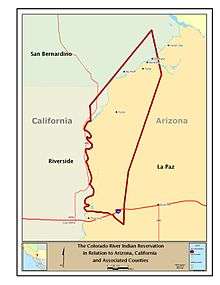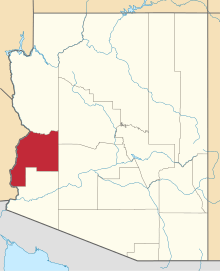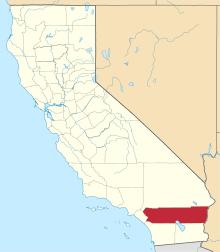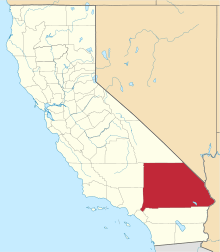Colorado River Indian Tribes
|
Tribal Flag | |
| Total population | |
|---|---|
| 4,277[1] | |
| Regions with significant populations | |
|
( | |
| Languages | |
| Colorado River Numic language, Hopi, Mojave, Navajo, and English | |
| Related ethnic groups | |
| other Chemehuevi, Mohave, Hopi, and Navajo people |
The Colorado River Indian Tribes is a federally recognized tribe consisting of the four distinct ethnic groups associated with the Colorado River Indian Reservation: Chemehuevi, the Mohave, Hopi, and Navajo. The tribe has about 4,277 enrolled members.
History
The reservation was established on March 3, 1865 for "Indians of said river and its tributaries."[2] Initially, these were the Mohave and Chemehuevi, but Hopi and Navajo people were relocated to the reservation in 1945.[2] The tribal seal was created by John Scott in 1966, and four feathers represented the four CRIT tribes. The tribal flag was designed by Margie McCabe and formally adopted in 1979.[1]
Reservation

The Colorado River Indian Reservation is a Native American reservation in the southwest United States. Its territory is primarily in western La Paz County, Arizona, with smaller portions in southeastern San Bernardino,[2] and northeastern Riverside counties, California. It has a total land area of 1,119.4445 km2 (432.22 sq mi), most of it within Parker Valley. It borders the Palo Verde Valley in the southwest boundaries. Tribal headquarters are in Parker, Arizona.
Tribal members mainly lived communities in and around Parker, the largest community, and Poston.[1] The 2000 census reported a population of 9,201 persons residing on the reservation.
Government

The tribe and its reservation territory is governed by an elected council of nine members and overseen by a tribal Chairman, Secretary, and Treasurer. These officers are elected from among the council members. The four tribes continue to maintain and observe their traditional ways and religious and culturally unique identities.
The current administration is:
- Chairman: Dennis Patch
- Vice-Chairman: Keith Moses
- Tribal Secretary: Amanda Barrera
- Tribal Treasurer: Valerie Welsh-Tahbo,
- Council Member: Granthum Stevens
- Council Member: Johnny Hill, Jr.
- Council Member: Herman “T.J.” Laffoon
- Council Member: Johnson “J.D.” Fisher
- Council Member: Amelia Flores.[2]
Economic development



The economy for the tribe is based on light industry, government, recreation, and agricultural, specifically growing commodity crops of alfalfa, cotton, lettuce, and sorghum.[2] The Colorado River Indian Tribes (CRIT) has senior water rights to 717,000 acre feet (884,000,000 m3) of the Colorado River, which represents nearly one-third of the allotment for the state of Arizona.
The tribe opened BlueWater Resort and Casino, located about two miles (3 km) from downtown Parker, as a tourist destination on the Colorado River.[1] It opened in June 1999. The casino is 30,000 square feet (2,800 m2) and has more than 500 slot machines. The resort features a 200-room hotel, a 10,000 square feet (930 m2) bingo hall, an indoor water park, movie theater, video arcade, marina, and concert facilities.[3]
The Colorado River Indian Tribe Museum and Gift Shop is in Parker, Arizona,[4] and has displays of historical and contemporary artworks, especially ceramics, made by tribal members.
Communities
Notable tribal members
- Jacoby Ellsbury (b. 1983), baseball center fielder with the Boston Red Sox and New York Yankees of Major League Baseball
See also
Notes
- 1 2 3 4 "About the Mohave, Chemehuevi, Hopi and Navajo Tribes". Colorado River Indian Tribes. Retrieved 22 November 2015.
- 1 2 3 4 5 "Colorado River Indian Tribes". Inter Tribal Council of Arizona. Retrieved 22 November 2015.
- ↑
- ↑ "CRIT Museum & Gift Shop". Colorado River Indian Tribes. Retrieved 22 November 2015.
References
- Colorado River Reservation, Arizona/California United States Census Bureau
External links
- Colorado River Indian Tribes, official website
- River Bend Fire Station, Riverside County, CA
- Lost Lake Fire Station, Riverside County, CA
- BlueWater Resort and Casino
Coordinates: 33°55′54″N 114°23′19″W / 33.93167°N 114.38861°W


